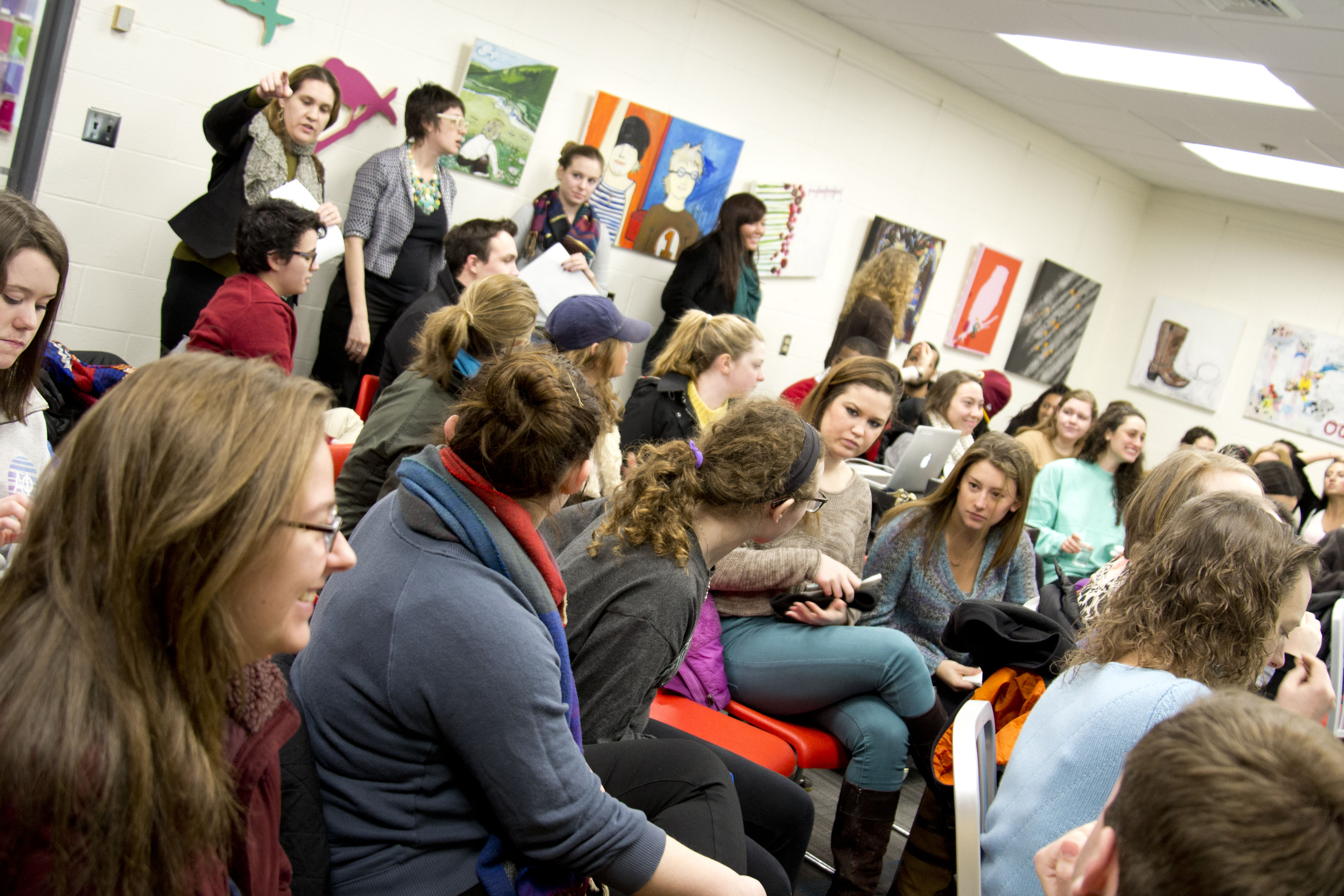By Justin Kozloski ’14, Editor-in-Chief
The Women’s Center held its first group discussion of the Spring semester, “The Rise and Fall of Miley Cyrus: Race, Class, Gender, and Media,” in which Miley Cyrus and her classification by society were discussed in the context of these three main categories.
The discussion was lead by Carolyn Chernoff, visiting assistant professor of sociology at Skidmore College. Chernoff has spent much of her career focusing her research on cities, art, and societal change. She primarily discussed the multi-dimensional aspects of social change as exemplified by Cyrus’s continually changing persona.
“I am not arguing that race, gender, and sexuality are one defined thing, but what we are looking at [in this discussion] are these intersectional categories and using Miley Cyrus as an example,” Chernoff said. “We are not looking at right or wrong but, rather, Miley as a production.”
Chernoff stressed that while many in society and the media seem to rail against Cyrus as making terrible personal choices or being over the top, Cyrus’s persona is a large production put on by the popstar. Chernoff emphasized that Cyrus has been in the spotlight her entire life and, as such, she is a particularly interesting case to examine in terms of the way people behave in the spotlight and react to fame.
“I doubt any of us will get to know the real Miley… if there is one,” Chernoff said.
The conversation began with Chernoff outlining Cyrus’s career and early life to show how she has risen to the current stage of her career. Chernoff pointed out that from the moment she was born Cyrus has been part of an elite group in society. Her father, country singer Billy Ray Cyrus, released his country-crossover hit “Achy Breaky Heart” the same year she was born, and she has been in the public eye ever since.
While she had a few roles in movies at an early age, she first came into her own as a popstar around the age of 16 when she adopted the “Tween Princess” persona with the release of “Party in the USA,” her first song outside the realm of her Disney Channel character, Hannah Montana.
After this hit song, Cyrus began to undergo a transition from the innocent tween singer to a “Twerking Machine,” as Chernoff affectionately referred to her. Next, the conversation focused on Cyrus’s scandalous performance at the 2013 Video Music Awards, after which her twerking with Robin Thicke elicited shock from American viewers.
But the beginning, solo portion of Cyrus’s performance was also troubling to Chernoff, especially the way in which Cyrus seemed to exploit the use of African American female dancers and their bodies.
Chernoff pointed out that Cyrus often speaks of her reverence for popstar Rihanna and many of Cyrus’s styles and actions seem to copy things Rihanna has done. Some see this as Cyrus subtly attempting to profit from Rihanna’s image, which upsets some people for the race and class issues that are inherent in this relationship.
“We talk about [Miley’s] sexuality, but we never talk about race and culture,” Chernoff said.
Chernoff went on to emphasize that Cyrus’s image is one based on an imitation of “ratchet” culture, or the stereotyped street culture in lower-income, black areas. Chernoff said this imitation is especially troubling because Cyrus has been privileged her entire life, has never known what it is like to be poor or black, and consequently, is basing her new image on assumptions and stereotypes of ratchet culture.
Throughout Cyrus’s attempts to imitate and glorify ratchet culture, Chernoff showed how the black, female form was being used by Cyrus in her dances and music videos, while also discussing the implications this has for these cultural issues at large. In a return to her opening points, Chernoff said Cyrus’s image can be seen as good or bad depending on how we perceive her motivations. Chernoff asked the audience to consider if Cyrus is using her style in attempt to equalize and bring respect to black culture, or if her actions further objectify female bodies and black culture.
Returning to issues of sexuality, Chernoff’s last points related to a conversation held, via open letters, among Cyrus, Amanda Palmer, and Sinead O’Connor where several points about female sexu- ality were made. O’Connor wrote an open letter of concern to Cyrus in which she argued that Cyrus was being pimped by the music industry and needed to stop her personification of women as being only worthy for their bodies and sexuality. However, Palmer argued that Cyrus’s tactics were a way of flipping the tables within a music industry and culture in which men are allowed to be sexually forward and women are not.
This point led to small group discussions focusing on what society expects of female popstars, and whether these expectations are damaging or restrictive. While these questions were never directly answered, many good points were raised, such as Cyrus’s own convictions and the effect the media has on wider perceptions of gender and race.
Overall, the Women’s Center was packed beyond capacity, and the audience seemed to be very engaged in the discussion. However, the gender balance of the audience left something to be desired, as only a few men attended the discussion. The conversation thoroughly explored many issues and contradictions facing society and young women today. Using Miley Cyrus as an example provided a multifaceted way to explore these issues.
Senior Justin Kozloski is the Editor-in-Chief. His email is jkozlosk@fandm.edu.

